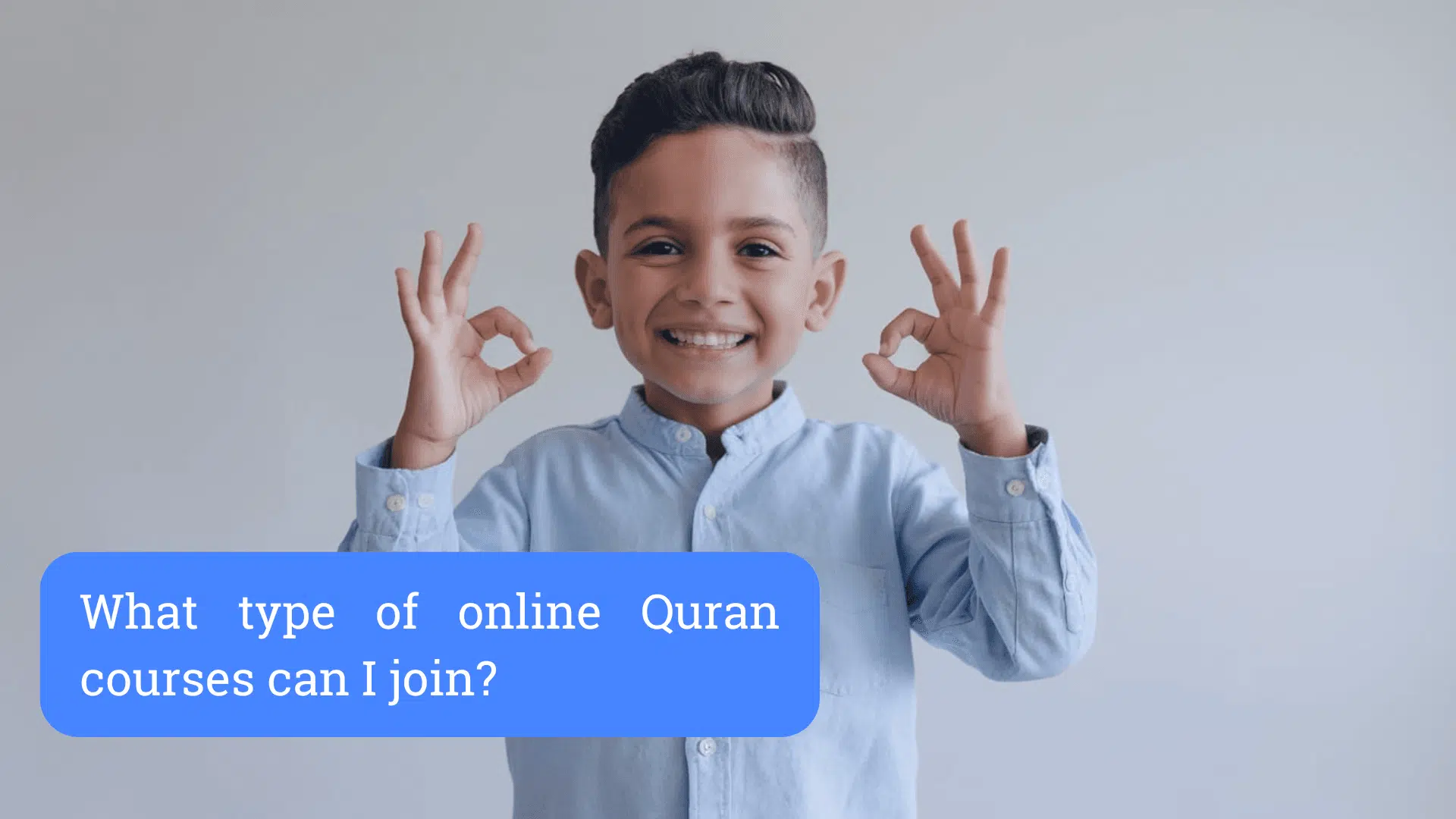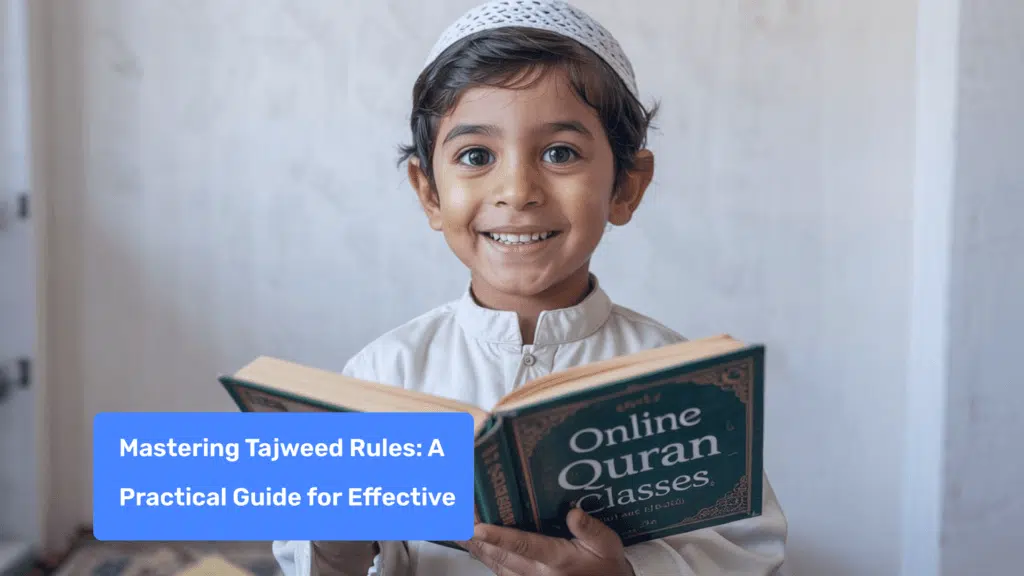The Holy Quran stands as one of the most influential texts in human history, guiding billions of Muslims worldwide through its divine wisdom and teachings. While many are familiar with its basic aspects, there are numerous fascinating elements about the Quran that often go unnoticed. In this comprehensive exploration, we’ll delve into ten remarkable facts about the Quran that showcase its historical significance, linguistic brilliance, and timeless relevance. The Quran’s message is made accessible to a diverse global audience through translations into over 100 languages, enabling individuals to engage with its teachings and deepen their understanding of its wisdom.
Origin and Compilation
The Quran Was Revealed to Prophet Muhammad Over a Period of 23 Years
One of the most noteworthy aspects of the Quran is its gradual revelation spanning more than two decades. Beginning in 610 CE when Prophet Muhammad (peace be upon him) was forty years old and continuing until shortly before his death in 632 CE, this extended period of revelation served several important purposes.
The gradual nature of revelation allowed the early Muslim community to absorb, comprehend, and implement the divine guidance in stages. Rather than being overwhelmed by receiving the entire text at once, the companions of the Prophet could internalize each revelation, seek clarification when needed, and gradually adapt their lives to align with the emerging Islamic teachings.
This progressive revelation also corresponded to the developing circumstances of the early Muslim community. As the Muslims faced new challenges—whether in Mecca during the years of persecution or later in Medina while establishing the first Islamic society—revelations would address these specific situations with appropriate guidance. This contextual relevance made the Quran’s teachings immediately applicable and demonstrated its responsiveness to human needs. The early Muslim community was constantly seeking guidance through these gradual revelations, which helped them navigate their spiritual and social challenges.
The process of revelation occurred through the Angel Gabriel (Jibril), who would deliver the divine message to Prophet Muhammad. These revelations could occur in various circumstances—while the Prophet was alone in meditation, surrounded by companions, or even during critical moments requiring immediate divine guidance. This divine-human connection established a living link between the Creator and creation, making the Quran not merely a text but a dynamic response to humanity’s spiritual journey.
The Compilation of the Quran: A Testament to Preservation
While the revelation of the Quran spanned 23 years, its careful compilation began during the Prophet’s lifetime. The Prophet Muhammad would immediately memorize each revelation and recite it to his companions, many of whom committed the verses to memory as well. Additionally, he appointed scribes who would write down the revelations on whatever materials were available—palm leaves, parchment, bone fragments, and stone tablets.
The most significant formal compilation effort occurred during the caliphate of Abu Bakr, the first caliph after the Prophet’s passing. Following the Battle of Yamama in which many memorizers (huffaz) of the Quran were martyred, Umar ibn al-Khattab suggested to Abu Bakr that the Quran should be collected into a single written volume to ensure its preservation. Abu Bakr commissioned Zaid ibn Thabit, one of the Prophet’s primary scribes, to undertake this monumental task.
Zaid’s methodology was remarkably rigorous. He would only accept a verse if it was both memorized by multiple companions and existed in written form with witnesses attesting to its authenticity. This dual verification system—combining oral tradition with written documentation—created an unprecedented level of textual authority and accuracy.
Later, during the caliphate of Uthman ibn Affan, the third caliph, a standardized compilation was produced and distributed to different Islamic territories. This careful preservation process ensures that the Quran Muslims read today is identical to the revelation received by Prophet Muhammad over fourteen centuries ago—a claim that few ancient texts can make with similar confidence. Quran translations into over 100 languages have further made the Quran’s message accessible to non-Arabic speakers, enabling individuals from diverse linguistic backgrounds to engage with its teachings.
Language and Structure
The Sacred Language of the Quran
The Quran is written in classical Arabic, a language considered sacred within Islamic tradition due to its role as the chosen medium for divine revelation. The selection of Arabic was not arbitrary but deliberate, as stated in the Quran itself: “Indeed, We have sent it down as an Arabic Quran so that you might understand” (Quran 12:2).
Classical Arabic possesses qualities that make it exceptionally well-suited for divine revelation. Its rich vocabulary allows for precise expression of complex concepts, while its grammatical structure permits layers of meaning within single phrases. The language’s capacity for both conciseness and elaboration enables the Quran to convey profound theological, ethical, and spiritual teachings efficiently. The Quran, as ‘al furqan’, serves as a guide for believers to recognize the signs of Allah in the world.
The linguistic features of Quranic Arabic include:
- Precision: The ability to convey exact shades of meaning through subtle word choices
- Flexibility: Grammatical structures that allow for multiple valid interpretations
- Musicality: Phonetic patterns that create a melodious quality when recited
- Emotional resonance: Words chosen not only for their literal meaning but their psychological impact
These characteristics create what Muslim scholars call “i’jaz” or the inimitable nature of the Quran—the belief that no human could produce a text matching its linguistic perfection. This linguistic excellence is considered a miracle and evidence of its divine origin.
Structure: A Design for Memory and Contemplation
The Quran’s organizational structure consists of 114 chapters (surahs) containing a total of approximately 6,236 verses (ayat). Rather than being arranged chronologically according to when they were revealed, the surahs are generally ordered from longest to shortest, with exceptions for strategic placement of certain chapters.
This structure serves multiple purposes:
First, it facilitates memorization—a practice central to Islamic tradition. The varied lengths of surahs allow memorizers to begin with shorter chapters and progressively tackle more extensive portions. This approach has enabled millions of Muslims throughout history to commit the entire Quran to memory, preserving it in hearts as well as on pages.
Second, the non-chronological arrangement encourages thematic connections and cross-referencing. Verses revealed years apart might appear in proximity within the compiled text, inviting readers to discover conceptual links and deeper insights. This interconnected nature of the text rewards sustained study and contemplation.
Third, the structure creates a rhythm of revelation that alternates between legal rulings, historical narratives, theological concepts, and ethical exhortations. This variety maintains engagement and prevents monotony, making the text accessible to readers with different interests and spiritual needs.
The Quran’s structure thus serves not merely as an organizational framework but as a pedagogical tool, designed to optimize both preservation and comprehension of its message across diverse human populations and through successive generations.
Contents and Significance
Surah Al-Fatiha: The Opening and Essence
Surah Al-Fatiha, meaning “The Opening,” holds a position of unparalleled significance within the Quran. Consisting of seven verses, this brief chapter encapsulates the core relationship between the Creator and creation, functioning as both an introduction to the Quran and a distillation of its essential message.
The profound significance of Al-Fatiha is highlighted by its mandatory recitation in each unit (rak’ah) of the five daily prayers, making it an integral part of the Muslim prayer (salah). This repetition emphasizes its centrality to Islamic worship and belief.
The chapter begins with praise of God—“All praise is due to Allah, Lord of the worlds”—establishing the fundamental Islamic worldview that recognizes divine sovereignty and expresses gratitude for creation. It continues by acknowledging God’s attributes of mercy and justice, setting the theological foundation for understanding the divine nature.
The middle verses express humanity’s relationship with God: “You alone we worship, and You alone we ask for help.” This statement articulates the essence of Islamic monotheism and the dependent relationship between humans and their Creator.
The concluding verses contain a profound supplication: “Guide us to the straight path—the path of those upon whom You have bestowed favor, not of those who have evoked [Your] anger or of those who are astray.” This prayer for guidance represents humanity’s core spiritual need and establishes the purpose of the entire Quran—to provide divine guidance for navigating life’s journey.
Through these seven verses, Al-Fatiha establishes the theological framework, spiritual orientation, and ethical aspiration that the remainder of the Quran will elaborate upon, making it truly the essence of the entire revelation.
The Quran’s Recognition of Previous Scriptures
A distinctive feature of the Quran is its acknowledgment and affirmation of earlier divine revelations. The Quran explicitly mentions the Torah (Tawrat) revealed to Moses, the Psalms (Zabur) given to David, and the Gospel (Injeel) bestowed upon Jesus, recognizing them as authentic divine scriptures for their respective communities.
This recognition establishes a sense of continuity in God’s revelation to humanity. The Quran presents itself not as a completely new message but as a confirmation and completion of previous revelations: “And We have revealed to you [O Muhammad] the Book in truth, confirming that which preceded it of the Scripture and as a criterion over it” (Quran 5:48).
The Quran’s position regarding these earlier scriptures is nuanced. It affirms their divine origin while suggesting that some of their content has been altered or misinterpreted over time. This perspective allows Muslims to respect the spiritual heritage of Judaism and Christianity while maintaining the Islamic belief in the Quran’s role as the final, preserved revelation.
By acknowledging previous scriptures, the Quran promotes a universal understanding of divine guidance—that God has sent messages to diverse human communities throughout history, tailored to their specific circumstances while conveying the same essential truths. This inclusive theological position establishes common ground with other Abrahamic faiths while maintaining the Quran’s distinctive theological perspective.
Scientific Facts and Miracles
Scientific Insights in the Quran
One of the most discussed aspects of the Quran in contemporary discourse is its references to natural phenomena that appear to align with modern scientific discoveries. These references, made in the 7th century CE, describe processes and concepts that were not scientifically understood until many centuries later.
The water cycle, for instance, is alluded to in various verses: “And it is He who sends the winds as good tidings before His mercy, and We send down from the sky pure water” (Quran 25:48) and “See you not that Allah drives clouds, then joins them together, then makes them into a heap? Then you see rain emerge from within it” (Quran 24:43). These descriptions accurately represent the processes of evaporation, cloud formation, and precipitation in a time when the complete water cycle was not understood.
Regarding cosmology, the Quran states: “And the heaven We constructed with strength, and indeed, We are [its] expander” (Quran 51:47). Modern astronomers didn’t discover the expansion of the universe until the 20th century, making this verse particularly noteworthy to those studying the intersection of religion and science.
The Quran also describes geological processes: “Have We not made the earth a resting place, and the mountains as stakes?” (Quran 78:6-7). The comparison of mountains to stakes or pegs aligns with contemporary understanding of how mountains have deep roots extending into the earth’s crust, providing stability similar to how a tent stake anchors a tent.
These scientific references serve multiple purposes within Islamic thought. For believers, they strengthen faith by demonstrating that the Quran must have a divine source, as its human recipients could not have possessed this knowledge independently. For scholars, they encourage investigation of the natural world as a means of appreciating divine wisdom. And for those exploring Islam, they present an intriguing convergence of ancient text with modern scientific understanding.
Human Development in the Quran
Among the most striking scientific descriptions in the Quran are those concerning human embryonic development. In multiple verses, the Quran outlines stages of human formation in the womb with remarkable accuracy:
“And certainly did We create man from an extract of clay. Then We placed him as a sperm-drop in a firm lodging. Then We made the sperm-drop into a clinging clot, and We made the clot into a lump [of flesh], and We made from the lump, bones, and We covered the bones with flesh; then We developed him into another creation. So blessed is Allah, the best of creators” (Quran 23:12-14).
This description identifies distinct phases of embryonic development—from the fertilization of an egg to the formation of a blastocyst that implants in the uterus (the “clinging clot”), to the development of a mass of cells (the “lump of flesh”), followed by the formation of skeletal structures and muscles. The sequence and characterization of these stages align with modern embryological understanding, despite being revealed centuries before the invention of microscopes or the establishment of embryology as a scientific discipline.
Another verse states: “He creates you in the wombs of your mothers, creation after creation, within three darknesses” (Quran 39:6). Some scholars interpret these “three darknesses” as referring to the abdominal wall, the uterine wall, and the amniotic sac—the three layers that surround and protect the developing fetus.
These descriptions of embryological development are particularly significant because they accurately describe processes that would have been impossible to observe with the naked eye in the 7th century. This precision is viewed by many Muslims as compelling evidence of the Quran’s divine origin and continues to inspire research at the intersection of Islamic teaching and medical science.
The Quran and the Frontal Lobe
A particularly intriguing reference in the Quran concerns human brain function—specifically, the role of the frontal region of the brain in moral decision-making and behavior. In Surah Al-‘Alaq, the Quran states: “No! If he does not desist, We will surely drag him by the forelock—a lying, sinning forelock” (Quran 96:15-16).
This reference to the “forelock” or forehead area as being associated with lying and sinful behavior corresponds remarkably with modern neuroscientific understanding of the prefrontal cortex—the brain region located behind the forehead. Contemporary neuroscience has established that this region is responsible for executive functions including decision-making, impulse control, moral reasoning, and planning—precisely the faculties involved in choosing between ethical and unethical behavior.
The prefrontal cortex is the last area of the brain to develop fully in humans and is considered the seat of our most advanced cognitive capabilities. Damage to this region often results in impaired moral judgment and increased impulsivity—effectively reducing one’s ability to refrain from “lying” and “sinning.”
The Quranic association of the forehead region with moral choice predates modern neuroanatomical understanding by over a millennium, making it another example of what many Muslims consider to be divine foreknowledge embedded within the scripture. For believers, these scientific consistencies strengthen conviction in the Quran’s divine origin, while for neuroscientists with interest in religious texts, they present fascinating cross-disciplinary connections worthy of exploration.
Academic Research and Benefits
The Flourishing of Quranic Studies
The Quran has been the subject of intensive academic research for centuries, with scholarly interest continuing to expand in contemporary times across diverse disciplines. This research encompasses multiple dimensions:
Historical-critical scholarship examines the context of revelation, analyzing how the Quran responded to and shaped the social, political, and religious environment of 7th century Arabia. This approach situates the text within its historical milieu while tracing its influence on subsequent Islamic civilization.
Linguistic studies focus on the Quran’s complex grammar, rhetoric, and semantic structures. Scholars have developed entire disciplines dedicated to understanding Quranic Arabic’s unique features, including the fields of balagha (rhetoric), nahw (grammar), and ma’ani (semantics).
Comparative religious studies explore the Quran’s relationship with previous religious traditions, particularly Judaism and Christianity. These investigations examine shared narratives, theological concepts, and ethical teachings, illuminating both commonalities and distinctive features of Islamic revelation.
Literary analysis applies modern critical methods to the Quran’s narrative techniques, symbolic language, and structural patterns. This approach has revealed sophisticated literary devices within the text, including ring composition (where themes appear in a symmetrical pattern), intertextuality, and strategic repetition.
Contemporary academic interest in the Quran has transcended traditional religious boundaries, with scholars from diverse backgrounds and beliefs contributing valuable insights. Major universities worldwide now house centers dedicated to Quranic studies, producing rigorous scholarship that enriches understanding of this foundational text.
This academic engagement with the Quran serves multiple purposes: it deepens appreciation of its historical significance, enhances comprehension of its message, preserves diverse interpretive traditions, and facilitates interfaith dialogue based on shared textual heritage.
The Multifaceted Benefits of Quran Recitation
The practice of reciting the Quran—known as tilawah—holds a central place in Islamic spiritual life, offering benefits that extend beyond religious obligation into psychological, cognitive, and social dimensions.
From a spiritual perspective, Quranic recitation establishes a direct connection with divine speech. Muslims believe that when reciting the Quran, they are not merely reading a text but engaging with God’s words in their original form. This creates a profound sense of divine presence and spiritual intimacy that many describe as transformative.
Psychologically, regular recitation has been associated with reduced anxiety, improved emotional regulation, and enhanced resilience against stress. The rhythmic patterns and melodious nature of recitation activate the brain’s reward centers, potentially explaining the sense of tranquility many experience during and after the practice. As the Quran itself states: “Unquestionably, by the remembrance of Allah hearts are assured” (Quran 13:28).
Cognitively, memorizing and reciting the Quran develops powerful mental faculties. The process of memorizing extensive portions of text—sometimes the entire Quran—strengthens memory, attention, and concentration. The linguistic complexity of the text also enhances verbal reasoning and language processing abilities.
Socially, Quranic recitation creates community bonds through shared spiritual experience. Group recitation sessions, competitions, and the nightly Taraweeh prayers during Ramadan bring Muslims together around the sacred text, reinforcing communal identity and shared values.
Modern research has begun to empirically investigate these benefits. Studies have documented improved psychological well-being among regular reciters, while neuroimaging research has observed distinct patterns of brain activation during Quranic recitation compared to other forms of speech or reading.
These multidimensional benefits explain why Quranic recitation remains a cornerstone of Muslim spiritual practice across cultures and throughout history—it nourishes the individual at multiple levels while simultaneously strengthening community bonds.
Preservation and Transmission
Tajweed: The Art and Science of Perfect Recitation
One of the most remarkable aspects of the Quran’s preservation is the sophisticated system of tajweed—a set of rules governing proper pronunciation, articulation, and rhythmic recitation. Tajweed represents an extraordinary feat of oral transmission, ensuring that the sounds of the Quran have been preserved with precision across fourteen centuries.
Tajweed encompasses multiple dimensions of phonetic precision:
- Makharij: The exact points of articulation for each letter within the mouth, throat, and lips
- Sifaat: The essential characteristics of each letter sound
- Ahkam: Rules governing the interaction between letters when they appear in sequence
- Madd: Precise timing for vowel elongation in specific contexts
- Waqf: Guidelines for where and how to pause during recitation
This system was developed to protect the Quran’s oral integrity against linguistic shifts and dialectal variations. By codifying exact pronunciation, tajweed ensures that the Quran sounds essentially the same whether recited in Indonesia, Nigeria, or Bosnia—and that contemporary recitation matches that of the earliest Muslim community.
What makes tajweed particularly significant is that it preserves not merely the text but the sound of revelation. In Islamic understanding, the Quran was revealed as an oral proclamation before being written down, making its aural dimension integral to its authentic preservation.
Tajweed is transmitted through a chain of teachers extending back to the Prophet Muhammad—a living link known as ijazah (authorization). A qualified teacher certifies that a student has mastered proper recitation, creating an unbroken chain of oral transmission that functions alongside written preservation.
This dual preservation system—combining written text with precise oral transmission—provides the Quran with an extraordinary level of textual stability unmatched by most ancient texts. The science of tajweed thus represents one of humanity’s most successful systems for preserving a spoken text across vast stretches of time and space.
Slow Recitation: The Gateway to Contemplation
Beyond preservation, tajweed serves another crucial function: it facilitates deep contemplation of the Quranic message. The measured pace required by proper tajweed creates space for reflection, allowing the reciter and listener to absorb the meanings rather than rushing through the text.
This contemplative approach aligns with the Quranic injunction: “And recite the Quran with measured recitation” (Quran 73:4). The Arabic term tarteel (measured recitation) implies not merely correct pronunciation but thoughtful, unhurried engagement that allows the meanings to penetrate the heart.
Slow, measured recitation activates both analytical and emotional processing. The mind engages with the conceptual content while the heart responds to the rhythmic beauty and spiritual power of the words. This dual engagement creates what Islamic tradition calls “heart-tenderness” (riqqat al-qalb)—a state of spiritual receptivity where insight and transformation become possible.
Research in cognitive psychology supports the value of this approach. Slower processing allows for deeper encoding of information, facilitates connection-making between concepts, and enhances emotional engagement with material—all factors that contribute to meaningful learning and potential behavior change.
Through the practice of measured recitation, the Quran becomes not merely a text to be read but an experience to be lived—a dynamic interaction between divine speech and human understanding that continues to transform individuals and communities across centuries and continents.
Conclusion: A Living Revelation
The Quran stands as a multidimensional text that functions simultaneously as spiritual guidance, legal framework, historical account, scientific marvel, literary masterpiece, and object of devotion. Its influence extends beyond religious boundaries, shaping world history, arts, sciences, and governance systems across fourteen centuries.
What distinguishes the Quran in the landscape of world scriptures is its remarkable preservation and continuous engagement. It exists not merely as a historical document but as a living presence in daily life—recited in prayers, memorized by millions, studied in institutions, and applied to contemporary challenges.
For believers, the Quran represents the literal word of God—Kalam Allah—making its recitation a direct encounter with divine speech. This understanding explains the unparalleled reverence with which Muslims treat the physical text, developing elaborate arts of calligraphy, illumination, and binding to honor its sacred status.
The Quran’s self-description as “a healing for what is in the breasts” and “guidance and mercy for the believers” (Quran 10:57) captures its transformative potential. Through its teachings, countless individuals have found spiritual direction, ethical clarity, psychological comfort, and intellectual stimulation.
As humanity faces unprecedented global challenges in the 21st century, the Quran continues to offer perspective and wisdom—calling for justice, compassion, environmental stewardship, and spiritual mindfulness. Its balanced approach to material and spiritual dimensions of life presents an alternative to both materialistic excess and impractical asceticism.
Whether approached as scripture, historical document, literary text, or cultural phenomenon, the Quran rewards sincere engagement with insights that transcend time and place. The fascinating facts explored in this article represent merely the beginning of what can be discovered through deeper study of this extraordinary text that continues to shape our world in visible and invisible ways.
The Quran itself perhaps best summarizes its purpose and potential: “This is the Book about which there is no doubt, a guidance for those conscious of Allah” (Quran 2:2)—an invitation to all who seek meaning, purpose, and direction in an increasingly complex world. The Quran’s message, translated into over 100 languages, makes its teachings accessible to a diverse global audience, enabling individuals to engage with its wisdom and deepen their understanding.
The Quran as a Source of Guidance and Inspiration
The Holy Quran stands as a beacon of guidance and inspiration for millions of Muslims around the globe. As the divine word revealed to Prophet Muhammad, its teachings are designed to lead human beings along the righteous path. The Quranic verses are imbued with messages of peace, love, and compassion, urging believers to live virtuous and meaningful lives.
One of the most profound aspects of the Quran is its ability to inspire and motivate individuals. Its verses are rich with wisdom, offering a deeper understanding of the world and our place within it. The Quran’s message transcends religious boundaries, presenting universal principles that can benefit all human beings, regardless of their faith.
The revelation of the Quran began in 610 CE, when Prophet Muhammad received the first divine message. Over the next 23 years, these revelations continued, providing guidance and inspiration to the Prophet and his companions. This period of revelation was pivotal in shaping the early Muslim community, transforming it into a vibrant and dynamic society.
Central to the Quran’s teachings are the principles of justice, compassion, and mercy. It emphasizes the importance of treating all human beings with kindness and respect, regardless of their background or circumstances. The Quran’s message is one of hope and optimism, encouraging individuals to strive for excellence in all aspects of their lives.
Beyond its spiritual and moral teachings, the Quran also contains a wealth of scientific and historical information. Its verses describe the creation of the universe, the origin of life, and the history of human civilization with remarkable accuracy, often aligning with modern scientific discoveries and archaeological findings.
The Quran’s influence extends beyond its spiritual and scientific teachings. It has inspired countless works of art, literature, and music, and its verses have been translated into numerous languages, spreading its message far and wide. The Quran’s profound impact on culture and the arts is a testament to its enduring relevance and universal appeal.
In conclusion, the Quran is a source of guidance and inspiration for millions of Muslims worldwide. Its teachings, rooted in justice, compassion, and mercy, offer a message of peace, love, and hope. The Quran’s significance extends beyond its spiritual and scientific content, serving as a wellspring of inspiration for art, literature, and culture. Through its timeless wisdom, the Quran continues to guide and inspire human beings, fostering a deeper understanding of life and our place in the universe.
















